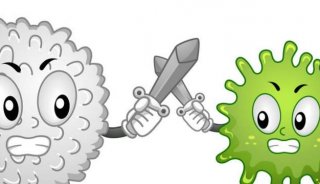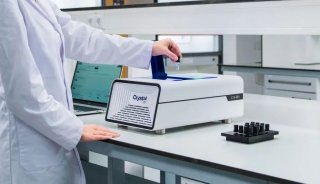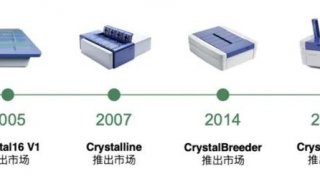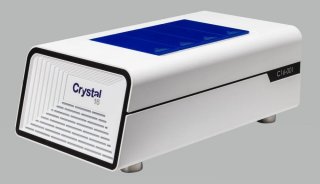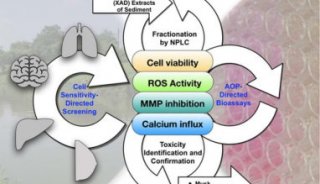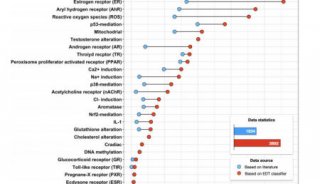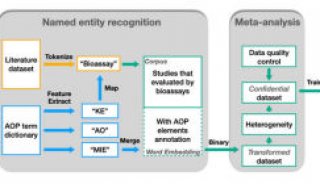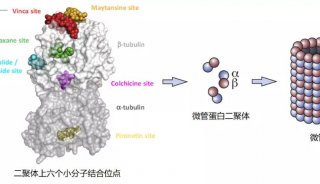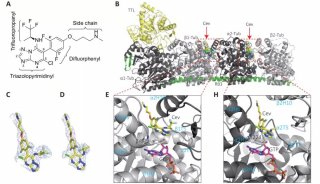促进药物通过血脑屏障的纳米技术取得新突破
大脑是一种很难治疗的器官,在近期刊登在《Science Translational Medicine》期刊上的一项研究,来自美国约翰霍普金斯大学的研究人员说,他们已设计出一种改进的纳米颗粒,当在鼠类和人组织上接受测试时,它能够安全和可预见性地深入渗透进大脑之中。并且他们发现一种方法来阻止嵌入药物的纳米颗粒附着到它们的周围环境之中,这样当进入大脑时,它们能够扩散开来。
在利用手术移除脑瘤之后,包括将化疗药物直接施加到手术位点之中的标准治疗方法被用来杀死利用手术不能除去的任何癌细胞。迄今为止,这种阻止肿瘤复发的方法只取得部分成功,这是因为很难施加足够高剂量的化疗药物来充分地穿过大脑组织,在确保疗效的同时也要保证剂量足够低以便让病人和健康组织不遭受毒副作用。
为了克服这种剂量挑战,研究人员设计出在一段时间内稳定地运送少量药物的纳米颗粒。常规性运送药物的纳米颗粒是在严紧的球中,通过将药物分子与微观的绳状分子捕获在一起而产生的,而当与水接触时,它们缓慢地降解。但是这些纳米颗粒并不能非常好地发挥作用,这是因为在注射位点,它们与细胞粘附在一起,因而不能更加深入地迁移到组织之中。
论文第一作者Elizabeth Nance和神经外科医师Graeme Woodworth博士猜测,如果运送药物的纳米颗粒与它们的周边环境发生的相互作用最小化,那么药物渗透作用可能会得到改善。Nance首先利用一种临床测试分子聚乙二醇(PEG)来包被不同大小的纳米塑料珠,其中其他人已证实PEG能够保护纳米颗粒不受体内防御机制的破坏。研究人员也推断一层厚的PEG可能也让这些珠子更加光滑。
研究人员将这些包被有PEG的塑料珠注射到鼠类和人大脑组织切片之中。他们首先利用发光的标签来标记这些塑料珠,从而能够让他们观察这些塑料珠在组织中的移动。与没有包被PEG的珠子或宝贝一层薄的EPEG的珠子相比,一层厚的PEG允许更大的珠子渗透大脑组织,甚至这些珠子将近是人们之前认为可能在大脑内渗透的最大大小的2倍时,它们也能渗透。他们然后在活的鼠类大脑中测试了这些珠子,并发现了同样的研究结果。
研究人员随后研究了携带化疗药物紫杉醇(paclitaxel)的生物可降解的纳米颗粒,并利用PEG包被它们。 与期待中的一样,在大鼠脑组织中,没有PEG包被的纳米颗粒极少移动,而包被有PEG的纳米颗粒在脑组织中非常好地分布。
Nance说,“非常令人兴奋的是,我们如今拥有能够携带5倍多药物的纳米颗粒,能够在3倍长的时间内释放这种药物,而且在脑组织中更深地渗透。下一步就是观察我们是否能够延缓鼠类动物体内肿瘤生长或复发。”
A Dense Poly(Ethylene Glycol) Coating Improves Penetration of Large Polymeric Nanoparticles Within Brain Tissue
Elizabeth A. Nance1,2,*, Graeme F. Woodworth1,3,*, Kurt A. Sailor4, Ting-Yu Shih2, Qingguo Xu1,5, Ganesh Swaminathan2, Dennis Xiang2, Charles Eberhart1,5,6 and Justin Hanes
Prevailing opinion suggests that only substances up to 64 nm in diameter can move at appreciable rates through the brain extracellular space (ECS). This size range is large enough to allow diffusion of signaling molecules, nutrients, and metabolic waste products, but too small to allow efficient penetration of most particulate drug delivery systems and viruses carrying therapeutic genes, thereby limiting effectiveness of many potential therapies. We analyzed the movements of nanoparticles of various diameters and surface coatings within fresh human and rat brain tissue ex vivo and mouse brain in vivo. Nanoparticles as large as 114 nm in diameter diffused within the human and rat brain, but only if they were densely coated with poly(ethylene glycol) (PEG). Using these minimally adhesive PEG-coated particles, we estimated that human brain tissue ECS has some pores larger than 200 nm and that more than one-quarter of all pores are ≥100 nm. These findings were confirmed in vivo in mice, where 40- and 100-nm, but not 200-nm, nanoparticles spread rapidly within brain tissue, only if densely coated with PEG. Similar results were observed in rat brain tissue with paclitaxel-loaded biodegradable nanoparticles of similar size (85 nm) and surface properties. The ability to achieve brain penetration with larger nanoparticles is expected to allow more uniform, longer-lasting, and effective delivery of drugs within the brain, and may find use in the treatment of brain tumors, stroke, neuroinflammation, and other brain diseases where the blood-brain barrier is compromised or where local delivery strategies are feasible.
-
科技前沿

-
焦点事件

-
科技前沿

-
科技前沿

-
焦点事件
